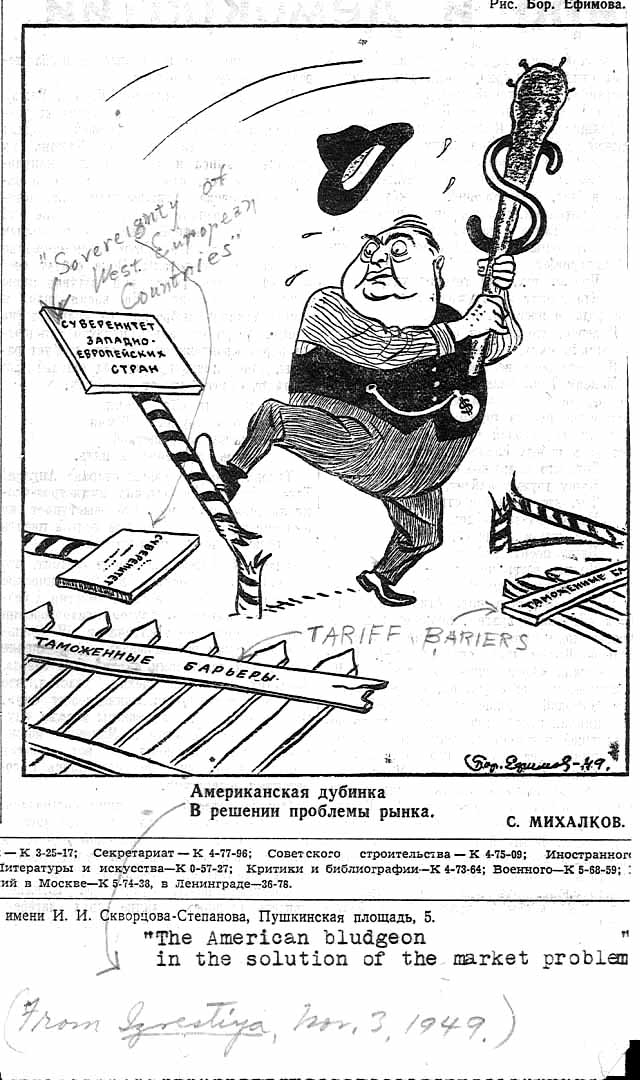 |
| Soviet cartoon criticizing the Marshall Plan |
An excited band of scholars met after school today to discuss postwar Europe. One student attached the cartoon at left, which depicts American postwar assistance to Western Europe as a form of imperialism, to our brainstorming
review document. Check it out and add more ideas. The cartoon brings together key points from the first two columns. The
Cold War between the US and the USSR was a major factor in postwar Europe. Europe was divided into East and West, while countries in both blocs forged closer ties. After the fall of communism, 1989-91, the liberal West has expanded to included former communist states. Today, the
European Union contains three countries--Estonia, Latvia, and Lithuania--that were once part of the Soviet Union; and, all of the former
Warsaw Pact member states, except the Soviet Union, are now a part of the
NATO.
Most of Europe faced substantial rebuilding after WWII, but the Western, capitalist countries eventually began a long economic expansion that reshaped their societies and brought France, West Germany, Italy, and the Low Countries closer together. This expansion continued the urbanization and the growth of the middle class that are megatrends in European history since 1450. This growing changing economy presented more opportunities for women who had entered the paid workforce in large numbers during the world wars. This, combined with an assertive feminism, created the conditions for the legal and social equality of women. Expanding educational opportunities in both eastern and western Europe were another factor in the growth of managerial, clerical, and technical careers on both sides of the Iron Curtain.
 |
| Gandhi spinning thread. Photo by Margaret Bourke White, 1946. |
Students nailed several aspects of
decolonization--the process by which former colonies became independent states--following World War II. In some cases this was violent, such as anti-French wars in Indochina and Algeria. The primary example of nonviolent anti-colonial movement was
Gandhi's (and others) campaign for Indian independence, although this was marked by Muslim-Hindu violence that accompanied the creation of Pakistan. John Green's
crash course on the decolonization, embedded at the bottom of the
review page, summarizes the factors responsible for the end of European empires: World War II, which exhausted resources and drained imperialism of moral legitimacy; and, nationalist movements in former colonies. The results were scores of new nation states, many with problematic borders and immigration from Africa, Asia, and the Caribbean into Europe as former colonial subjects sought economic opportunity.
The postwar period is three chapters, instead of two, in the more recent issues of
McKay, and reviewing students should follow the developments above to the twenty-first century. There is often a postwar FRQ, and if not there will be multiple choice questions. How might you approach one of the following, all from the last two years?
- Analyze various factors that contributed to the process of decolonization in the period 1914 to 1975.
- Analyze the factors that led to the expansion of women’s participation in the paid workforce in Europe over the course of the twentieth century.
- Analyze the factors that led to the expansion of the welfare state in Western Europe in the mid-twentieth century.
Feel free to discuss in comments.




_-_Google_Art_Project.jpg)